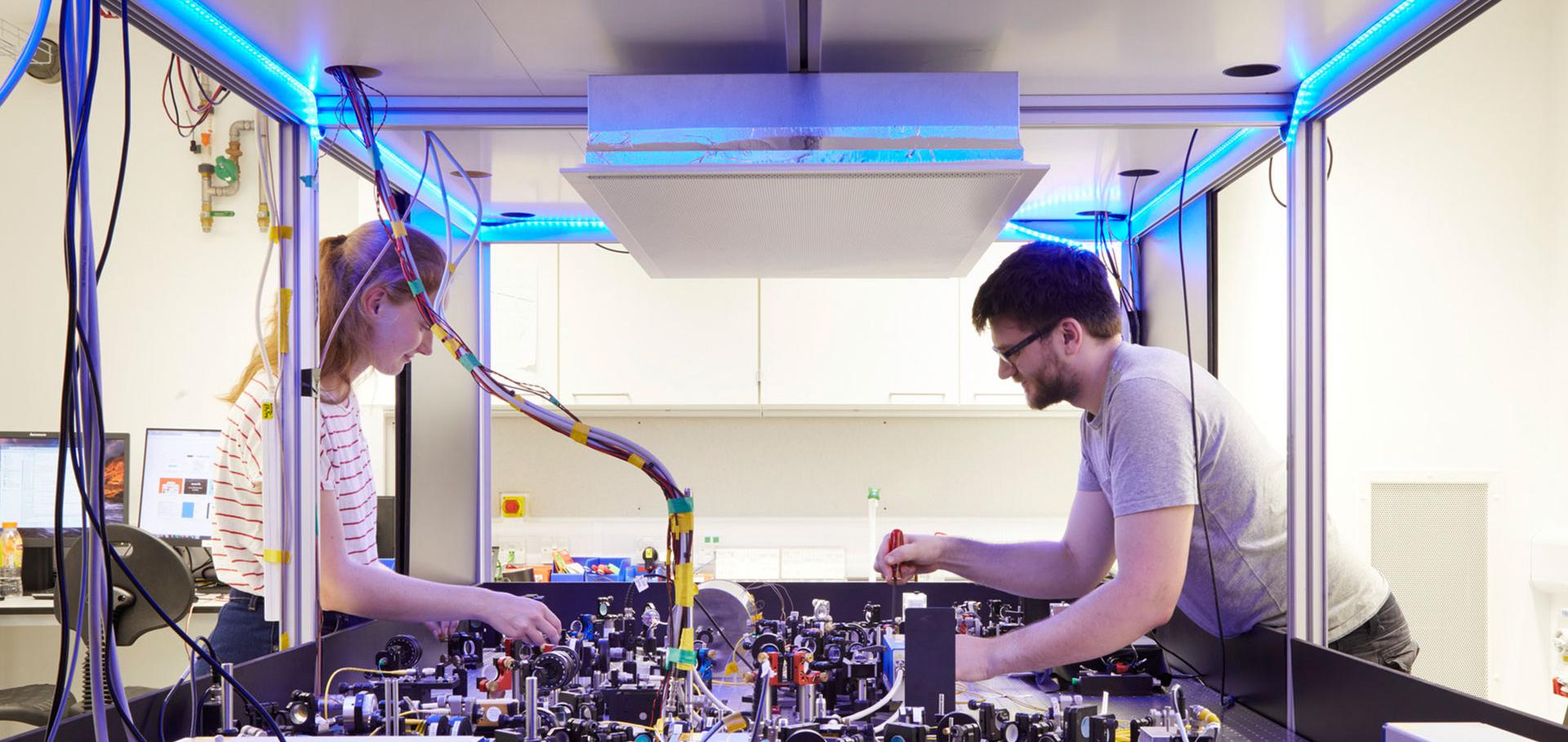Cryogenic ion trap system for high-fidelity near-field microwave-driven quantum logic
Quantum Science and Technology IOP Publishing 9:1 (2023) 015007
Abstract:
We report the design, fabrication, and characterization of a cryogenic ion trap system for the implementation of quantum logic driven by near-field microwaves. The trap incorporates an on-chip microwave resonator with an electrode geometry designed to null the microwave field component that couples directly to the qubit, while giving a large field gradient for driving entangling logic gates. We map the microwave field using a single 43Ca+ ion, and measure the ion trapping lifetime and motional mode heating rates for one and two ions.Mode mixing and losses in misaligned microcavities
Optics Express Optica Publishing Group 31:20 (2023) 32619-32636
Abstract:
We present a study on the optical losses of Fabry-Pérot cavities subject to realistic transverse mirror misalignment. We consider mirrors of the two most prevalent surface forms: idealised spherical depressions, and Gaussian profiles generated by laser ablation. We first describe the mode mixing phenomena seen in the spherical mirror case and compare to the frequently-used clipping model, observing close agreement in the predicted diffraction loss, but with the addition of protective mode mixing at transverse degeneracies. We then discuss the Gaussian mirror case, detailing how the varying surface curvature across the mirror leads to complex variations in round trip loss and mode profile. In light of the severe mode distortion and strongly elevated loss predicted for many cavity lengths and transverse alignments when using Gaussian mirrors, we suggest that the consequences of mirror surface profile are carefully considered when designing cavity experiments.Improving trapped-ion qubit memories via code-mediated error-channel balancing
Physical Review A: Atomic, Molecular and Optical Physics American Physical Society 107 (2023) 052417
Abstract:
The high-fidelity storage of quantum information is crucial for quantum computation and communication. Many experimental platforms for these applications exhibit highly biased noise, with good resilience to spin depolarisation undermined by high dephasing rates. In this work, we demonstrate that the memory performance of a noise-biased trapped-ion qubit memory can be greatly improved by incorporating error correction of dephasing errors through teleportation of the information between two repetition codes written on a pair of qubit registers in the same trap. While the technical requirements of error correction are often considerable, we show that our protocol can be achieved with a single global entangling phase gate of remarkably low fidelity, leveraging the fact that the gate errors are also dominated by dephasing-type processes. By rebalancing the logical spin-flip and dephasing error rates, we show that for realistic parameters our memory can exhibit error rates up to two orders of magnitude lower than the unprotected physical qubits, thus providing a useful means of improving memory performance in trapped ion systems where field-insensitive qubits are not available.Optimisation of scalable ion-cavity interfaces for quantum photonic networks
Physical Review Applied American Physical Society 19 (2023) 014033
Abstract:
In the design optimization of ion-cavity interfaces for quantum networking applications, difficulties occur due to the many competing figures of merit and highly interdependent design constraints, many of which present “soft limits,” which are amenable to improvement at the cost of engineering time. In this work, we present a systematic approach to this problem that offers a means to identify efficient and robust operating regimes and to elucidate the trade-offs involved in the design process, allowing engineering efforts to be focused on the most sensitive and critical parameters. We show that in many relevant cases it is possible to approximately separate the geometric aspects of the cooperativity from those associated with the atomic system and the mirror surfaces themselves, greatly simplifying the optimization procedure. Although our approach to optimization can be applied to most operating regimes, here we consider cavities suitable for typical ion-trapping experiments and with substantial transverse misalignment of the mirrors. We find that cavities with mirror misalignments of many micrometers can still offer very high photon extraction efficiencies, offering an appealing route to the scalable production of ion-cavity interfaces for large-scale quantum networks.Effects of cavity birefringence in polarisation-encoded quantum networks
New Journal of Physics IOP Publishing 25:1 (2023) 013004


